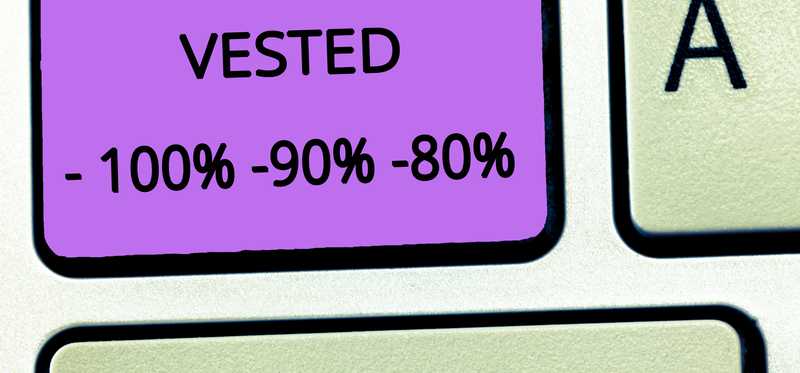15 Steps to Be a 401(k) Millionaire

15 Steps to Be a 401(k) Millionaire
Let your 401(k) help you get rich
It can be easy to assume that as an ordinary person it's next to impossible to achieve millionairehood. That's not the case for many of us, though. If you're able to sock away some meaningful sums regularly and retirement is more than a few years away, you may be able to amass much more money than you think -- and your 401(k) can be a big help with that.
Read on for more specific examples of how much you might amass, along with some important tips.
5 Winning Stocks Under $49
We hear it over and over from investors, “I wish I had bought Amazon or Netflix when they were first recommended by the Motley Fool. I’d be sitting on a gold mine!” And it’s true. And while Amazon and Netflix have had a good run, we think these 5 other stocks are screaming buys. And you can buy them now for less than $49 a share! Simply click here to learn how to get your copy of “5 Growth Stocks Under $49” for FREE for a limited time only.
Previous
Next

1. What do you need to retire with?
You might start by asking yourself how much money you really need to retire with, because you may not need to get to a million dollars. Each of us is in a different situation, with different sums already saved and different expected expenses in retirement. Some of us may even have pensions to look forward to in retirement, though that's increasingly rare.
Take some time to estimate your expenses in retirement in order to determine the kind of annual income you'll need. Don't forget to factor in the cost of healthcare, as it's likely to be one of your biggest expenses.
Previous
Next

2. Look up how much Social Security income you may receive
It's helpful as you're determining your financial needs in retirement to know how much money you can expect to receive from Social Security. The average monthly benefit for retirees was recently only $1,519 -- or about $18,000 annually -- which isn't likely to be enough for most people. There's a good chance that you have more than that coming to you, though. So head over to the Social Security Administration (SSA) website, where you can set up a my Social Security account, which will let you see the SSA's records of your earnings, along with your estimated benefits.
Previous
Next

3. Dream big -- and work toward that dream
So… how much can you amass over time, via your 401(k) and/or other savings and investing accounts? The table above will give you a good idea, reflecting how much you might get with different sums invested over different periods.
As you can see, given enough time and/or sufficient annual investments, you can end up with a million dollars -- or more. Note, too, that all of the above might be accomplished within a 401(k) account, as 401(k)s have generous annual contribution limits. For 2020, you can contribute up to $19,500 to your account, plus an additional $6,500 (for a total of $26,000) if you're 50 or older. The limits are increased in most years.
Previous
Next

4. Consider the Roth 401(k)
Know that many, if not most, large employers these days offer not only a traditional 401(k) account but also a Roth 401(k) account. With a traditional 401(k) account, just as with a traditional IRA, you get an up-front tax break from your contributions and are taxed on withdrawals. So a $5,000 contribution reduces your taxable income by $5,000, shrinking your tax bill. You're eventually taxed on withdrawals from the account.
With a Roth 401(k) account, as with a Roth IRA, you contribute post-tax money and get no up-front tax break: A contribution of, say, $5,000 doesn't change your taxable income at all. Here's what's great about Roth accounts, though: If you follow the rules, your withdrawals in retirement can be tax-free. That's especially powerful for younger people who have many years for their money to grow.
Previous
Next

5. Grab all matching dollars
Next, to make the most of your 401(k), max out any available matching dollars. Employers commonly offer matching contributions, and you should be sure to contribute at least enough to your account to get all you can from the match. It's free money after all, so you shouldn't leave any on the table. A frequently used formula for a match is 50% of what you contribute, up to 6% of your salary. So if you earn, say, $50,000, and you contribute $3,000 to your 401(k), your employer will add an extra $1,500 -- the maximum. Contributing less than $3,000 to your account means you're not maxing out the match.
5 Winning Stocks Under $49
We hear it over and over from investors, “I wish I had bought Amazon or Netflix when they were first recommended by the Motley Fool. I’d be sitting on a gold mine!” And it’s true. And while Amazon and Netflix have had a good run, we think these 5 other stocks are screaming buys. And you can buy them now for less than $49 a share! Simply click here to learn how to get your copy of “5 Growth Stocks Under $49” for FREE for a limited time only.
Previous
Next

6. Understand vesting
If there's any chance you won't be sticking around in your job for long, you'll want to understand how vesting works, because some companies only make their matching funds available to you on a vesting schedule. As an example, if there's a four-year vesting schedule, you might get ownership of 25% of a matching contribution from your employer after one year, and ownership of the next 25% the following year, and so on. Vesting schedules are designed to keep employees around.
Previous
Next

7. Increase your contributions regularly
A few slides ago, you saw how much you can amass over time with regular investments of $10,000, $15,000, and $20,000. Right now, you might only be able to manage investments of $10,000 per year -- or less. But however much you can sock away this year, see if you can contribute more to your 401(k) next year, and even more the year after that. The more you can stash -- especially early on -- the more you can amass. Never assume that whatever portion of your income that you're saving, such as 10%, is enough. That's an often-used rule of thumb, but if you're late starting to save and invest, it may well not be enough.
ALSO READ: 3 Steps to Retiring a Millionaire Even if You Have No Savings
Previous
Next

8. Bank those raises and refunds
A good way to regularly increase how much you save and invest is to move as many raises as possible into your 401(k). So if you're earning, say, $60,000, and you receive a $2,000 raise, have your contributions to your 401(k) increased by $2,000. Doing so means you'll keep receiving the same take-home pay while shoveling more dollars into your savings account. Try doing the same with your tax refunds. You probably can't use these tricks every year, but you may be able to use them fairly often, with great results.
Previous
Next

9. Tread carefully with your employer's stock
Many companies allow workers to invest in shares of company stock via their 401(k) accounts -- sometimes at a discounted price -- and while there's a case for doing so, there's also a good case against it. On the plus side, getting shares at a discount is generally a good deal, and there's a decent chance that your employer is the company you know best and in which you have a lot of confidence. But think about this: You're already relying on your employer for the income you live on. If you put much or most of your future financial security in the hands of your employer, too, you're relying on it for everything. It's a bit risky -- because even good companies can fall on hard times, possibly even going out of business, hurting their shareholders in the process. In a worst-case scenario, you might lose your job and also see the value of your retirement savings plummet. Yikes!
Previous
Next

10. Beware of default investments
A 401(k) account will often be set up to direct your dollars into certain default investments. These might be ultraconservative ones that will grow slowly, and/or they may include target date funds that are designed to hold stocks and bonds in a shifting mix as you approach your expected retirement year. You might like and want those default investments, but look into all your options. If you have many years, possibly decades, before you retire, it might be best to be very stock heavy in your account, perhaps via a low-fee index fund.
5 Winning Stocks Under $49
We hear it over and over from investors, “I wish I had bought Amazon or Netflix when they were first recommended by the Motley Fool. I’d be sitting on a gold mine!” And it’s true. And while Amazon and Netflix have had a good run, we think these 5 other stocks are screaming buys. And you can buy them now for less than $49 a share! Simply click here to learn how to get your copy of “5 Growth Stocks Under $49” for FREE for a limited time only.
Previous
Next

11. Consider index funds
One of the best ways to build wealth over time is via the stock market, and one of the best ways to invest in it is via a low-fee index fund. Index funds aim to roughly offer the same performance as a particular index of stocks (or other securities), by holding the same components. They tend to charge very low fees, too. Even superinvestor Warren Buffett has recommended index funds for most investors.
Previous
Next

12. Don't borrow from or cash out your 401(k)
A 401(k) account (or several of them, if you've moved around from job to job) can help you build significant wealth -- but its power can be severely diminished if you borrow from or cash out the account before retirement. Remember: It's in the later years that your money is really growing powerfully, as there's more of it to grow. Imagine, for example, that you accumulated $20,000 in your 401(k) at work and then changed jobs, at age 40. If you cash out , figuring that $20,000 isn't that much, know that over the next 25 years, growing at, say, an average annual rate of 8%, it would have become almost $137,000 -- a sum that could support you for several years in retirement. Borrowing from your 401(k) isn't a great idea, either, because the sum you remove will have fewer years to grow for you -- and if you fail to repay the debt, you can face penalties and taxes. Note, too, that there are some new rules to know if you're considering these options.
Previous
Next

13. Check those fees
Fees can also trip you up when you're trying to save a lot via a 401(k) plan. It can be hard to find out just what fees you're paying, but you might ask your plan administrator for that information. You can also see if your employer is among the many companies whose 401(k) plans are assessed at BrightScope.com. If your 401(k) plan features higher-than-average fees, you might want to depend on it less for your long-term savings. You could contribute only enough to max out a company match, and then focus other savings on IRAs or regular, taxable brokerage accounts.
Previous
Next

14. Spend less and boost your income
One strategy to help you be able to contribute meaningful sums to your 401(k) (or other retirement accounts) is to spend less and generate more income. There are many ways to spend less, such as canceling subscriptions or memberships you no longer need and perhaps switching to a different insurance company. There are plenty of income-generating options for you, too, such as driving for a ridesharing service on the side or making and selling crafts online.
Previous
Next

15. Don't forget inflation
Don't neglect to factor inflation into your retirement plans or you may really regret it later. It's not too big a deal over a few years, but it can cut the purchasing power of your nest egg in half over a few decades. If you're 35 now and are aiming to have an annual income of $50,000 in your retirement that should start in 30 years, remember that $50,000 won't buy nearly as much in 30 years as it will today. Over many years, inflation has averaged close to 3% annually, but it has sometimes been much higher or lower than that.
5 Winning Stocks Under $49
We hear it over and over from investors, “I wish I had bought Amazon or Netflix when they were first recommended by the Motley Fool. I’d be sitting on a gold mine!” And it’s true. And while Amazon and Netflix have had a good run, we think these 5 other stocks are screaming buys. And you can buy them now for less than $49 a share! Simply click here to learn how to get your copy of “5 Growth Stocks Under $49” for FREE for a limited time only.
Previous
Next

Keep learning
Finally, keep learning as you go through your financial life. The more you know, the better investing results you'll likely have and the more comfortable retirement you'll likely have as well. Read up on topics from stocks, bonds, and mutual funds to Social Security. There are many great articles at Fool.com that you might enjoy, and plenty of good financial books, too, such as The Little Book of Common Sense Investing by John Bogle, The Little Book of Value Investing by Christopher H. Browne, Common Stocks and Uncommon Profits by Philip A. Fisher, and The Little Book That Still Beats the Market by Joel Greenblatt.
The Motley Fool has a disclosure policy.
Previous
Next
Invest Smarter with The Motley Fool
Join Over Half a Million Premium Members Receiving…
- New Stock Picks Each Month
- Detailed Analysis of Companies
- Model Portfolios
- Live Streaming During Market Hours
- And Much More
READ MORE
HOW THE MOTLEY FOOL CAN HELP YOU
-
Premium Investing Guidance
Market beating stocks from our award-winning service
-
The Daily Upside Newsletter
Investment news and high-quality insights delivered straight to your inbox
-
Get Started Investing
You can do it. Successful investing in just a few steps
-
Win at Retirement
Secrets and strategies for the post-work life you want.
-
Find a Broker
Find the right brokerage account for you.
-
Listen to our Podcasts
Hear our experts take on stocks, the market, and how to invest.
Premium Investing Services
Invest better with The Motley Fool. Get stock recommendations, portfolio guidance, and more from The Motley Fool's premium services.